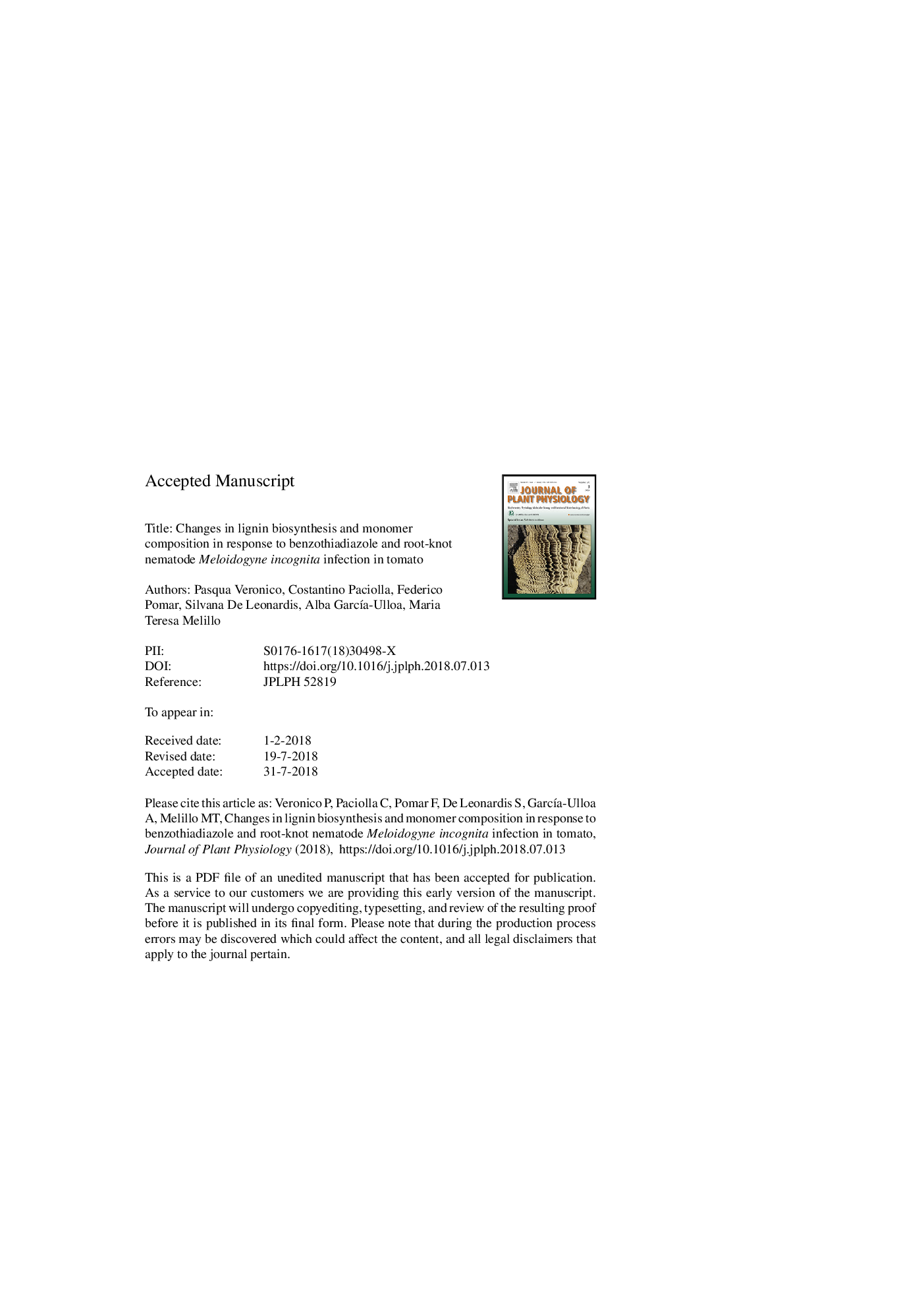| Article ID | Journal | Published Year | Pages | File Type |
|---|---|---|---|---|
| 8943783 | Journal of Plant Physiology | 2018 | 30 Pages |
Abstract
Benzothiadiazole (BTH) acts as a priming agent in plant defence leading to a reduction in penetration and development of the root-knot nematode Meloidogyne incognita in susceptible tomato roots. Changes in lignin biosynthesis in the susceptible tomato cv. Roma following nematode infection and/or BTH treatment were investigated in comparison to the resistant cv. Rossol. Both untreated and BTH-treated susceptible infected roots (galls) showed an increased level of expression of lignin synthesis-related genes (PAL, C4H, HCT and F5H) at early times during infection (2-4âdays post inoculation). Peroxidase (soluble and cell-wall bound, POX) enzyme activities increased after inoculation with M. incognita and the priming effect of BTH treatment was evident at later stages of infection (7âdays post inoculation). As expected, the induction of PAL and POXs and lignin synthesis-related genes was faster and greater in resistant roots after infection. Histochemical analysis revealed accumulation of higher lignin levels at later infection stages in BTH-treated galls compared to untreated ones. Furthermore, the monomer composition of lignin indicated a different composition in guaiacyl (G) and syringyl (S) units in BTH-treated galls compared to untreated galls. The increase in G units made G/S ratio similar to that in the resistant genotype. Overall, lignin played a critical role in tomato defence to M. incognita in response to BTH.
Keywords
Related Topics
Life Sciences
Agricultural and Biological Sciences
Agronomy and Crop Science
Authors
Pasqua Veronico, Costantino Paciolla, Federico Pomar, Silvana De Leonardis, Alba GarcÃa-Ulloa, Maria Teresa Melillo,
